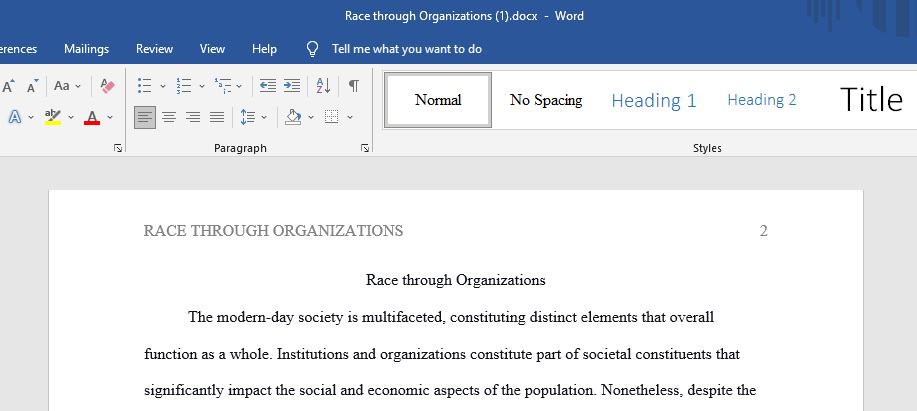Race through Organizations
Organizations are central to social (and economic) life. The complexity of the contemporary world would simply be impossible were it not for the existence of equally complex, rationalized, and bureaucratic organizations that allow us to become highly specific in our jobs yet contribute to the creation of widely multifaceted outcomes. Organizations are also of particular interest because they fall in between levels of sociological analysis: they are not as large as “The State”, for example, yet they are larger than individual interactions. Organizations, in this sense, exist between the macro and the micro, between structures that seem to dictate the possibilities of individuals and settings where choice and individual action seem to shape how things behave.
In his exceptional article, Victor Ray analyzes organizations as eminently racialized situations. At the core, Ray insists we pay attention to how race is taken up by organizations with specific consequences. He argues, for example, that racialized organizations will moderate in different ways the capacity of different racial groups to act, that they justify unequal outcomes, adopt whiteness as a credential, and decouple rules from practice across distinctly racialized lines. Because much of this becomes a taken-for-granted characteristic of organizational life, it becomes, too, fuel for the reproduction of racialized inequalities even in the absence of overtly illegitimate racial discrimination. As Ray writes, “once racialized practices are instantiated, the elimination of all intentionally discriminatory action will not eliminate unequal outcomes.”
An important exercise for sociologists is auditing one’s own organizational affiliations. For this assignment, you will have to conduct an analysis of the University of California’s character as a racialized organization. Although a global leader in research, an exceptional motor of social mobility in the state, an institution committed to equity, diversity and inclusion, and a national example of a public flagship system, the University of California is nevertheless a racialized organization. In this exercise, you will explore the evidence and implications of this racialization by investigating the University of California’s diversity dashboards.
In this assignment, you will answer the question of whether the UC is a racialized organization. To start, I want you to open the following link for the UC’s diversity data (https://www.universityofcalifornia.edu/infocenter/uc-workforce-diversity (Links to an external site.)). There, you will be able to see the percentages of academics and staff at all UC campuses that fall in different categories of gender, race, and nation of origin. I want you to exclude from your analysis faculty and staff in UC Health, by selecting the option of “General campus” in the Service Focus menu (see below).
As the above image shows, you are able to see the percentages of Hispanic/Latinos and Black/African Americans for different selections of the menu.
Once you have constrained your results to the general campus, I want you to compare differences within different staff groups, in particular, from Student Staff and Professional And Support Staff (PSS) all the way to Senior Management Group. What changes did racial composition did you observe? Remember that this hierarchy is also related to remuneration.
I now want you to compare staff to faculty. I want you to look at two types of faculty: Ladder Rank Faculty (which means, from Assistant to Full Professors who enjoy stability of employment), and Lecturers (who do not enjoy stability of employment). Are there gendered and/or racial differences across these groups? How do they compare to each other? And how do they compare to staff?
Finally, I want you to think of what happens in moments of crisis (such as the ones we are currently living). Who is likely to suffer less job stability? Is race an indirect factor?
Present your answer in the form of a 750 word essay.
Requirements: Essay | 3 pages, Double spaced
This is the requirement mention the article, but data is main
Answer preview:

word limit:780
